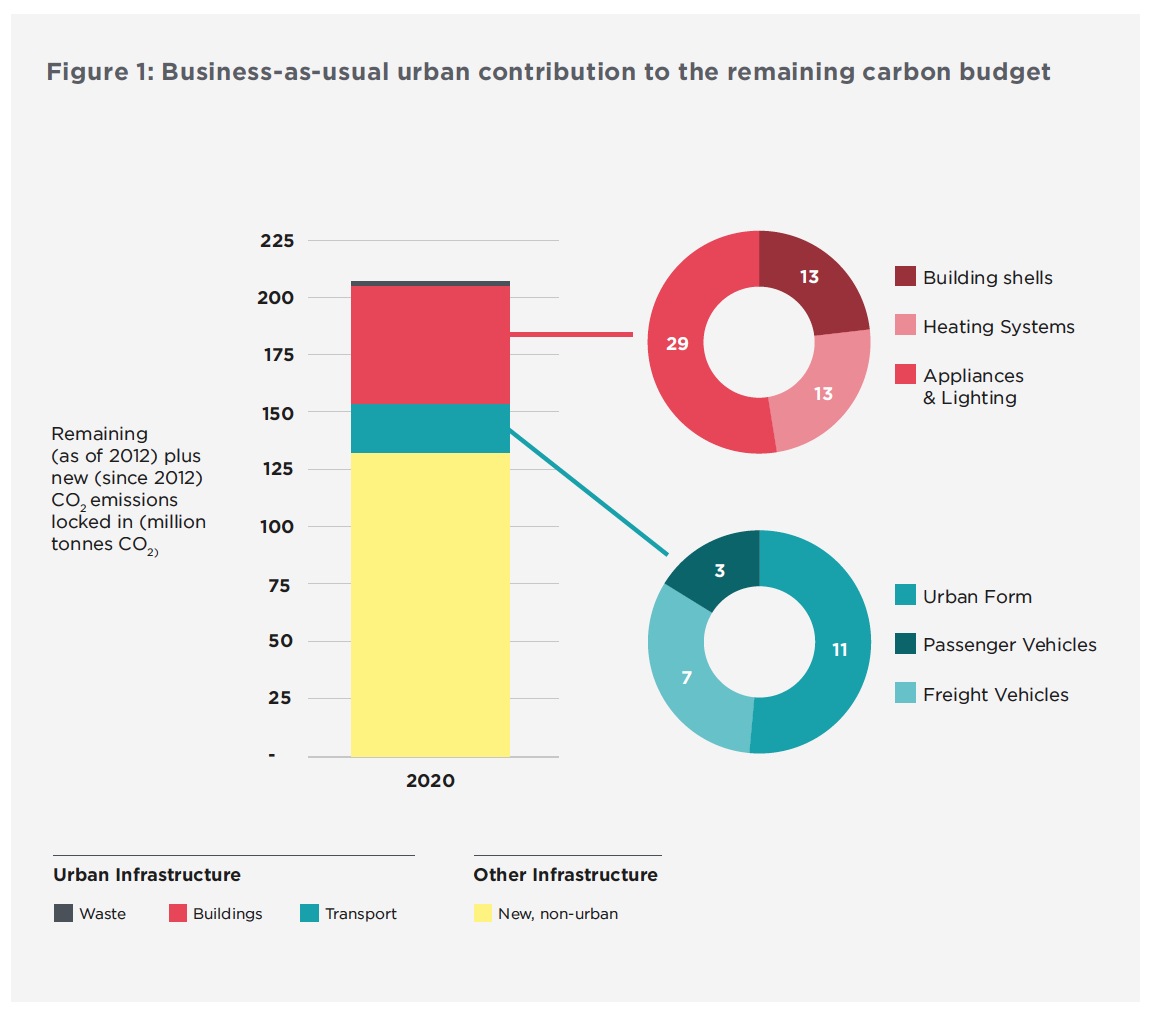C40 CITIES CLIMATE LEADERSHIP GROUP
One third of the world’s remaining safe carbon budget could be determined by urban policy decisions in the next five years.
This document draws from the main findings of a ground breaking new report by C40 and the Stockholm Environment Institute (SEI), which demonstrates that urban policy decisions before 2020 could determine up to a third of the remaining global carbon budget that is not already ‘locked-in’ by past decisions. Existing research has shown that investing in low carbon infrastructure in the next five years will be four times less expensive than building high carbon infrastructure now, and then having to replace it in the future. Mayors and local leaders in power today thus have a major role to play in determining whether or not we have a cost-effective and, therefore, realistic path to a climate safe world.
Scientists have previously calculated that we can emit a ‘carbon budget’ of just 1,000 Gt C02 without creating an unacceptable risk of run-away climate change, and that much of this budget may already be locked-in by investments such as fossil fuel power stations, highways and energy-hungry buildings that have already been made.
Previous research has suggested that decisions about the remaining investments will be taken in the next five years, by 2020. Fortunately, C40 and SEI’s new analysis shows that a third of the decisions will be made in cities, meaning local leaders in office right now, many of whom have already demonstrated leadership on climate change, can grasp the opportunity to move on to a low-carbon path.
Negotiations for a critical new climate treaty, taking place in Paris this December at COP21, concern action to be taken after 2020. But mayors can, and are, taking action right now. Over half of all C40 cities have committed to the Compact of Mayors, a global platform where cities publish their current emissions inventories and commit targets and action plans to cut future emissions. Hundreds more cities around the world are following suit and making ambitious commitments. None need to wait for the outcome of treaties and talks to take action.
This new report is thus both a major boost in on-going efforts to deliver a climate safe world, and provides further evidence that there needs to be a major focus on supporting mayors and action in cities.
As urban populations grow, cities will play a pivotal role in moving us towards a low carbon development path.
The world is becoming ever more urban, with 1.5 million people moving into towns and cities every week, all requiring infrastructure like homes, roads, electricity and water supplies. As a result, the approach taken to urban infrastructure construction, renewal and refurbishment will play a substantial role in avoiding or locking in future emissions. For example, hundreds of millions of new homes will either produce large quantities of greenhouse gas (GHG) emissions through poor energy performance, or avoid emissions through sensible and efficient design.
This report is the first to quantify the extent to which urban development decisions made in the near future will set the course for high or low carbon development in the long term. It estimates that close to one-third of our remaining global carbon budget, that is not already ‘locked-in’, will be influenced by urban development decisions made in the next five years.
Carbon Lock-in
“Locked-in” emissions are those associated with investments or policy decisions made to date, but with emissions consequences for the future. For example, once the decision is taken to build a new coal-fired power station, we can calculate the likely emissions that will result over its whole lifecycle, which can be considered ‘locked-in’ once the plant is constructed. This can mean that continued high carbon investments can lock in large volumes of carbon emissions many years before they are actually released. This is important when considering how to stay within set carbon budgets.
There are opportunities to mitigate or “unlock” emissions from existing infrastructure, although in many cases this can be challenging. Existing urban buildings with poor energy performance can be refurbished or retrofitted. Better insulation and more efficient heating systems can be installed. Or in the case of urban transport infrastructure, highways devoted exclusively to private motor vehicles can have one or more lanes given over to public transport such as trams or bus rapid transit (BRT).
Download full version (ISSUU): The Decisions We Make Today Will Shape Tomorrow
About C40 Cities Climate Leadership Group
www.c40.org
C40 is a network of the world’s megacities committed to addressing climate change. C40 supports cities to collaborate effectively, share knowledge and drive meaningful, measurable and sustainable action on climate change.







 RSS Feed
RSS Feed